
views
Choosing and Preparing the Crate
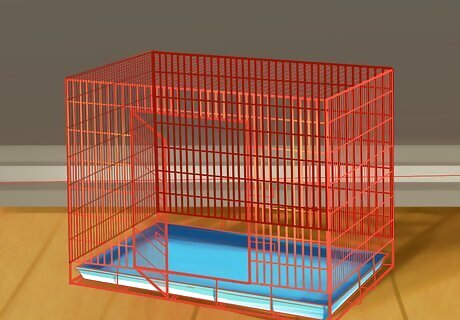
Pick a crate that is the right size. A crate should be just big enough for your dog. If it's too small, your dog will be uncomfortable. If it's too big, your dog will have space to use the bathroom in the crate and still have a clean area. It should be big enough for your dog to sit up, stand up, lay down, and turn around, but no bigger. Part of the reason crate training works is because your dog doesn't like to sleep where they've used the bathroom. Therefore, getting a crate that's not too big helps prevent your dog from going to the bathroom in it.
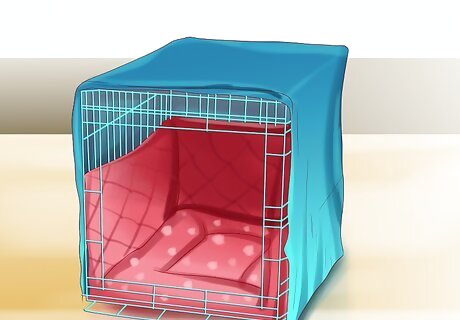
Make the crate a happy place. A soft blanket or even a towel on the bottom of the crate helps make it more comfortable. You can also add a few toys your dog likes, so it has something to entertain itself with while it is in the crate. You can also find pads and beds that fit into the crate. These are great options for any dog, but especially one that is older or that has arthritis.
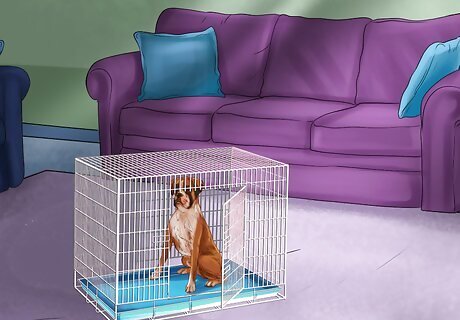
Situate the crate in a busy area. Placing the crate in a busy area will help your dog feel more comfortable with being in the crate. Therefore, when placing the crate, it's a good idea to choose a location where your family will often be.
Introducing the Dog to the Crate
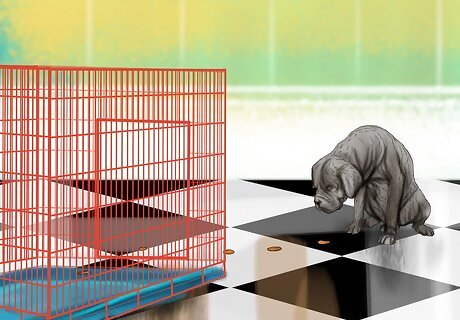
Show the dog to the crate. Call your dog over. Begin by dropping treats near the crate. Keep dropping treats, moving closer to the crate as you do. Speak in a happy tone to your dog, saying things such as "Good dog!" Drop some treats inside the crate to encourage your dog to go in. Make sure the door is fastened open so it won't scare your dog by hitting it. Keep working with your dog until you can get it to go all the way in the crate. This process could take a few days.
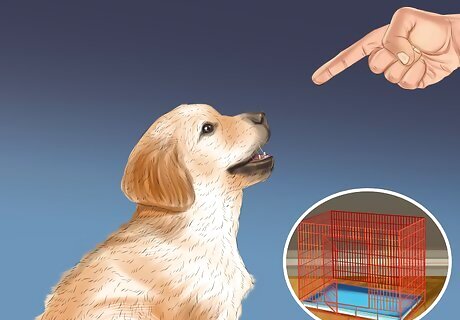
Work on a verbal cue. You want your dog to be able to go in the crate when you give a voice command. Choose one for your dog to learn. The command is up to you; it can be "kennel," "bed," "crate," or even "go home." As long as you're consistent, it shouldn't matter. When your dog starts going in the kennel regularly, you can use the command as it goes in to begin getting it accustomed to cue.
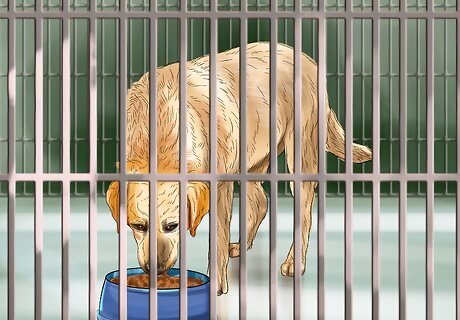
Feed your dog in the crate. If your dog is still hesitant, place the food dish just inside the crate so that your dog doesn't need to go all the way in to eat. As the dog grows more accustomed to it, move the food bowl further and further back each time, so eventually your dog is all the way in the crate while eating. Once your dog is going all the way in, try shutting the door just while the dog is eating. When it's done, open the crate.

Begin crating the dog when it's not eating. Once your dog is accustomed to being crated during meals, try leaving the dog in there for a few minutes after it eats, increasing to about 10 minutes over several days. Your dog may whine. If it does, you may have increased too quickly. However, make sure you wait until the dog stops whining to let it out. Otherwise, it learns it can cry to be let out.
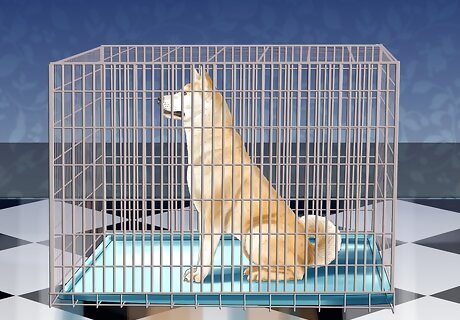
Increase the crate time. Once your dog is not whining to be let out after meals, try crating the dog at other times. Call the dog over with a treat, and shut the dog in. Sit near the dog, but don't make noise. Start with about 10 minutes and gradually work up to 30 minutes or so. You can also leave the room for a short period after sitting for a few minutes. Make sure you don't leave the dog inside too long.
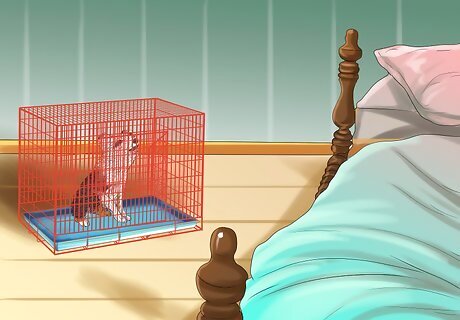
Work on nighttime and extended periods. If your dog isn't crying and whining for the short periods you leave it in the crate, work on crating the dog while you're in the house but not in the room. If you can leave it for 30 minutes to an hour, you can start trying out-of-the-house excursions, though keep them short at first. For bedtime, try making the process easier by moving the crate to your room. Otherwise, the dog may think the crate is a punishment (being away from you). As the dog gets more comfortable, you can move it somewhere else.
Housebreaking Your Dog
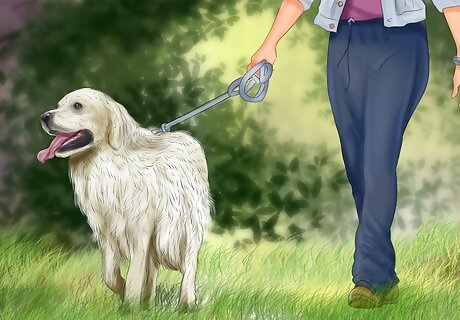
Put the dog on a schedule. A puppy, especially, needs to go out regularly, but an older dog can benefit from a schedule, too, if you're trying to housebreak it. Try taking the dog outside at least every two hours, but also when the dog wakes up, before it goes to bed, after eating or drinking, and after (or while) playing. Also, take the dog out after it has been in the crate for a while. Consider the dog's age when setting a schedule. House training a puppy is vastly different from house training a dog. The main difference is a dog can be expected to hold their bladder longer than a puppy. To calculate how long your puppy should be able to hold it, use an hour per month. Therefore, a two-month-old can likely hold it for two hours. However, no dog should be expected to hold it longer than nine to ten hours (overnight). Also, set a consistent schedule for feeding. If the dog's food is consistent, they're more likely to use the bathroom at consistent times each day.
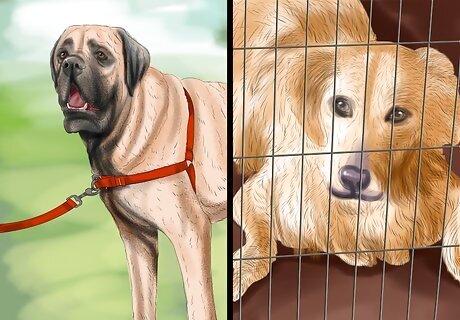
Keep your dog in the crate or on a leash. While you are housebreaking the dog, it's important to supervise them as much as possible. If you can watch the dog, put it on a leash near you, tethered to a piece of furniture, so you can watch for bathroom cues. If you need to be busy, you can keep the dog in the crate if you've started working on crate training. Bathroom cues can include circling, whining, sniffing, pacing, going to corners or behind furniture, walking towards the door, standing at the door, scratching the door, walking toward vertical items, or staring at you. Keep in mind that some dogs may not show cues. If you can't supervise the dog and it's not ready for the crate, put the dog in a safe area, such as a tiled laundry room. Make sure to remove things like chemicals, plants, and other unsafe items the dog can chew. Try to make the area as small as possible, so your dog is less likely to go to the bathroom.
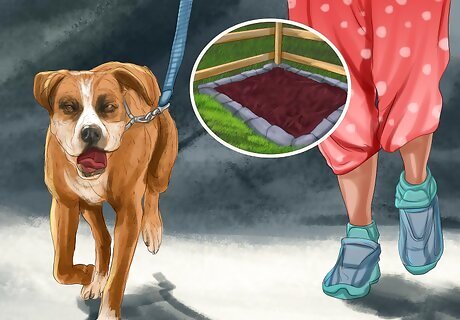
Use a bathroom spot. Take your dog outside on a leash. As you do, pick a bathroom cue word, such as "pee," "bathroom," or even "outside." Outside, pick one place in your yard that you take your dog for using the bathroom, so they know that's where they need to go each time. Use the cue word while they are going to the bathroom. Take the dog out to the bathroom before you take them on a walk, at least while training, so they know where they need to go.
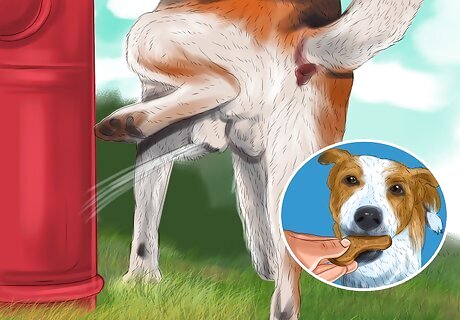
Praise your dog for going outside. When you take your dog outside to use the bathroom, praise it extravagantly when it does. You can offer a treat, but also pet it, and use a happy, excited voice to let the dog know what a good job it's done. Unless you catch your dog in the act, you won't be able to do anything about mistakes. If you do catch your dog using the bathroom inside, make a noise to startle it into stopping. Pick it up, and take it outside to finish going to the bathroom.

Watch for bathroom signals. Every dog is a little different, but as you start training your dog to go outside, you'll start to notice things it does when it wants to go out. It may bark, scratch at the door, squat, grow restless, or circle. If you see your dog doing these things, take it outside.



















Comments
0 comment